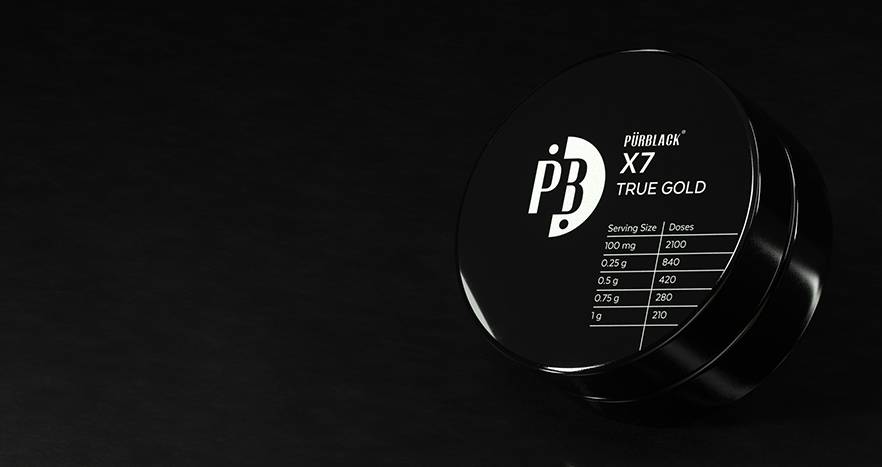Do you know that our food today is nutrient-poor compared to previous decades? Now, you might think you’re eating healthier simply because you’re avoiding fast food. As it turns out, even agricultural crop sources are fast declining in nutritional value [1].
Experts who have pointed out this change say that natural sources of food must continue to be part of a person’s diet. However, even your nutrition-rich salad may not be giving you the level of nutrients your body needs to function optimally. To get the ideal dietary intake for nutrients, you need to eat more of the good foods. That is one solution.
In reality, you could only eat so much. That’s why the alternative solution is to supplement. However, supplements go through intensive manufacturing. Processing practices can strip off most of what could’ve been good for your body.
Shilajit (mumio, mumie or moomiyo) can enhance your immunity and energy levels. It is quite not the same as your usual A to Z multivitamin. Shilajit draws more of the minerals from the raw source. Still, shilajit quality is hard to guarantee. Not all products claiming to deliver shilajit fulvic acid benefits can be trusted. That’s why you need to know how to spot a fake.
The Difference Between Shilajit and Fulvic Acid
Most of the shilajit products you’ll find in the market will highlight fulvic acid shilajit. Do you want to know what shilajit fulvic acid is? It’s not a ‘heal-all’ solution as many shilajit brands would like you to think.
Why is it Better to Take Fulvic Acid as Part of Shilajit?
First, you need to know if you’re taking shilajit or fulvic acid only. What is shilajit resin? Shilajit is a complex substance naturally present in resin form. Shilajit that brings good things to the body can only form in places that meet specific biological and environmental conditions*.
Second, you have to understand that shilajit fulvic acid complex benefits. are limited when a supplement only contains the fulvic acid component. What is shilajit fulvic acid complex? It can’t be as good as taking authentic shilajit resin that has been carefully tested, processed, and distributed*.
Shilajit contains fulvic acid and more than 80 other minerals. These components are best taken together. Supplementing with either fulvic acid or humic acid alone is just no match against the wide range of health benefits that can potentially be derived from shilajit.*
There are also other components in shilajit, like dibenzo-α-pyrones (DBP) [2]. Catalysts like DBP may enhance processes in the body. In the case of DBPs, that includes neutralizing free radicals and delaying aging .*
What is Shilajit Fulvic Acid?
Shilajit fulvic acid complex and humic acid are typically used as active components of fertilizers. Together, these acids make up the humic substance. This is made up of rich amounts of carbon, hydrogen, oxygen, nitrogen, and sulfur. Plants need these nutrients to fuel growth and food production.
According to a study [3], higher amounts of humic substance in soil speed up plant growth and food production. It increases the amount of adenosine triphosphate (ATP) available to fuel these processes. It was pointed out in the study that even in plants, higher humic substance does not automatically result in these benefits. It still matters where the humic substance was taken from because this will impact its content profile.
Humic and fulvic acids are formed from degraded plants. Lignin that once formed the structural support of dead plants is also present in undegraded form. Studies have shown that lignin can potentially be used to improve human health [4].*
Toxicity studies so far point out that fulvic acid is safe up to a daily dose of 1.8g per adult [5].* Otherwise, shilajit fulvic acid side effects may occur.
The Role of Fulvic Acid for the Body and its Benefits
A growing number of studies report health and wellness benefits that can be derived from humic substance in general*.
How is Humic Acid and Fulvic Acid beneficial to humans?
Some of these are highlighted below:
- Anti-inflammatory. In a literature review [5], several studies show how humic substances can be used to stop hypersensitivity. Some support its use in promoting cardiovascular health. In a mice experiment [6], researchers observed that humic acid can inhibit allergic contact dermatitis by stopping the release of cytokines.*
- Improve wound-healing. In another mice experiment [7], researchers noted how mice with oral wounds healed faster than the control groups.*
- Improve energy levels. Energy from food must be broken down into ATP. It’s the body’s energy currency. The combination of dibenzo-ɑ pyrones found in shilajit can increase the body’s supply of ATP [2]. That means, more power to fight stress, tiredness, and aging.*
- Slow down cancer. Several studies have looked into the effect of humic substances on cancer cells. In an in vitro study, researchers used HL-60 cells associated with leukemia [8]. The researchers noted that introducing humic acid slowed down the growth and spread of cancer cells.*
Shilajit may help promote your general health and well-being. When you intend to use shilajit with your diet, choose one that is based on rigorous research. The Pürblack process is patented US10130656B2 and designed for purity, quality, and safety.*
*These statements have not been evaluated by the Food and Drug Administration. These products are not intended to diagnose, treat, cure, or prevent any disease.
The information provided on this site is intended for your general knowledge only and is not a substitute for professional medical advice or treatment for specific medical conditions. Always seek the advice of your physician or other qualified healthcare providers with any questions you may have regarding a medical condition. The information on this website is not intended to diagnose, treat, cure or prevent any disease. Never disregard medical advice or delay in seeking it because of something you have read on the PürblackⓇ site.







